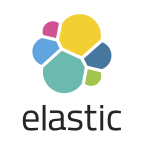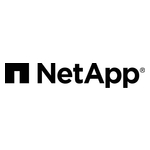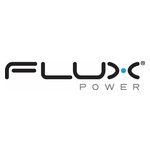New data modeling capabilities, AI enhancements, a new Snowflake Native App, OAuth write access for the Snowflake AI Data Cloud and Databricks, a Glean integration and more help enterprises trust their data through intelligent tools
Sigma Announces New Data Modeling Features Aimed at Providing Organizations with a More Trustworthy Data Environment
Sigma, the first data analytics solution built natively for live query on cloud data, announced today several new features* aimed at providing data engineers, data curators, and business leaders with greater flexibility to run their analysis—within guardrails for consistency in results. These features, announced at today’s fall product launch, allow organizations to do much more with data they can trust.
Enhanced Data Modeling in Sigma
Sigma offers intelligent tools to help customers clean and model their data, and for consistency in their calculations.
These new features provide a structured, high-level representation of business data and its relationships, which helps bridge the gap between complex data sources and data science work with business end users.
Data modeling in Sigma is unique. It’s:
- GUI-based: A no-code UI for speed and accessibility, which helps business users define and share their metrics.
- Flexible: Users can choose to layer on semantic models and governance as needed for their use cases (many use cases are one-off and don’t require modeling in advance).
- Integrated with the rest of the data ecosystem: Users can read (and eventually write) business logic to and from other tools in their stack. The first such integration Sigma is launching is with the dbt Semantic Layer.
- Leveraged for AI: Sigma’s Natural Language Querying, powered by the customer’s connected AI models (e.g. OpenAI), reads directly from pre-defined metrics and models, making the use of AI transparent and accurate.
“With our latest enhancements, we’ve made it easier than ever for business users to define their metrics without writing a single line of code. By delivering flexibility, speed, and seamless integration with the broader data ecosystem, Sigma allows users to trust both the data and the process. It’s about giving the power back to the people closest to the problems and enabling teams to move faster with confidence,” said Mike Palmer, Sigma CEO.
“The dbt and Sigma partnership offers a perfect combination for our customers that want best-of-breed BI on top of a centrally governed semantic layer where all critical business metrics can be defined and managed in one place,” said Nick Handel, Head of Semantic Layer at dbt Labs.
Announcing New AI Features
The two new AI features in Sigma are Explain Viz and Formula Assistant:
- Explain Viz: Explain Viz uses the customer’s connected AI to automatically generate a clear and concise description of any chart, highlighting key insights, observations, and data summaries. This feature helps users quickly understand the story behind their data, saving time and effort in interpreting complex visualizations.
- Formula Assistant: The Formula Assistant leverages the customer’s AI models to help users create new formulas, correct errors in existing ones, and provide explanations for formulas used in workbooks and data models, making it easier to work with complex data. This feature streamlines the formula-building process, reduces errors, and increases productivity for users of all skill levels.
“Explain Viz and Formula Assistant are exciting new functionalities for teams looking to work faster and with greater confidence in their use of AI. By making AI-powered insights more accessible, these tools accelerate productivity and free up data teams to focus on more strategic tasks. We’ve also designed them with transparency in mind, ensuring users can hold AI accountable every step of the way. These are just two examples of how Sigma is leveraging AI to help you get the most out of your data,” said Rob Woollen, Sigma co-founder and CTO.
Connecting Workflows through the New Glean Integration
Sigma has also announced its new integration with Glean, an enterprise search tool that connects your entire workflow. With just two clicks, you can search Glean within Sigma, instantly accessing unstructured data like Slack threads, Google Docs, Jira tickets, and more. This integration eliminates the need to jump between systems, empowering you to find solutions faster and work more efficiently by connecting Sigma’s structured insights with the context that lives elsewhere.
Introducing New Features Making it Easier to Use and Administer Sigma
In this product launch, Sigma is announcing the expansion of OAuth coverage with write access for Snowflake and other platforms. This makes Sigma the first data analytics platform to offer OAuth for write access to Snowflake and Databricks.
- OAuth Write-back to Snowflake: Sigma already offers OAuth for Snowflake. Now it expands OAuth support to enable secure write-back from a Sigma input table to a Snowflake data warehouse.
- OAuth for Databricks (including write-back): Use OAuth with Databricks connections for centralized user access management between Sigma and Databricks to provide greater security and decrease administrator time investment. OAuth support is provided for input tables, write-back, warehouse views, materializations, and CSV uploads.
- Data Connector to Microsoft Azure: Use the Sigma connector to Microsoft Azure to enable secure communication between the Sigma platform and an Azure cloud data warehouse.
Announcing the Sigma BI Analyst by Hakk?da
Sigma BI Analyst by Hakkoda is a Snowflake Native App that will assess a company's usage of a legacy BI tool on Snowflake and show them potential cost savings with Sigma. Currently shared via private listings, Sigma BI Analyst can show users information like workbook statistics, data source patterns in workbooks, and license utilization. Select users will be able to input how much they're paying for viewer licenses and compare that to free Sigma Lite licenses. The app also uses Snowflake Cortex AI to recommend formula syntax changes between BI tools.
“At Hakkoda, we’re excited to partner with Sigma to simplify the migration process for enterprises looking to modernize their business intelligence and sunset legacy BI tools,” said Erik Duffield, CEO and co-founder of Hakkoda. “Once available, Sigma BI Analyst will empower teams to assess their current BI landscape and find immediate cost savings, all while ensuring a seamless, secure migration. This tool accelerates what used to take weeks or months, helping businesses get a more holistic view of their data quickly.”
“Collaborating with Sigma and Hakkoda to launch the Sigma BI Analyst by Hakkoda supports Snowflake’s mission to empower organizations with data-driven insights,” said Tarik Dwiek, Head of Technology Alliances, Snowflake. “This app has the potential to simplify migrations from legacy BI tools, leveraging Snowflake’s platform to enable smarter decision-making and drive cost savings. By integrating Sigma’s capabilities with Cortex AI, it provides businesses with a faster, more efficient path to modern analytics.”
* Please note many of these features are currently in their beta test phase. For more information on Sigma or securing beta access to some of these features, visit https://www.sigmacomputing.com/.
ABOUT SIGMA
Sigma redefines business intelligence by enabling instant, in-depth data analysis on billions of records through an intuitive spreadsheet interface. Its write-back capability and comprehensive support system accelerate organizational growth and innovation.
View source version on businesswire.com: https://www.businesswire.com/news/home/20240917597941/en/
 Business wire
Business wire 











Add Comment